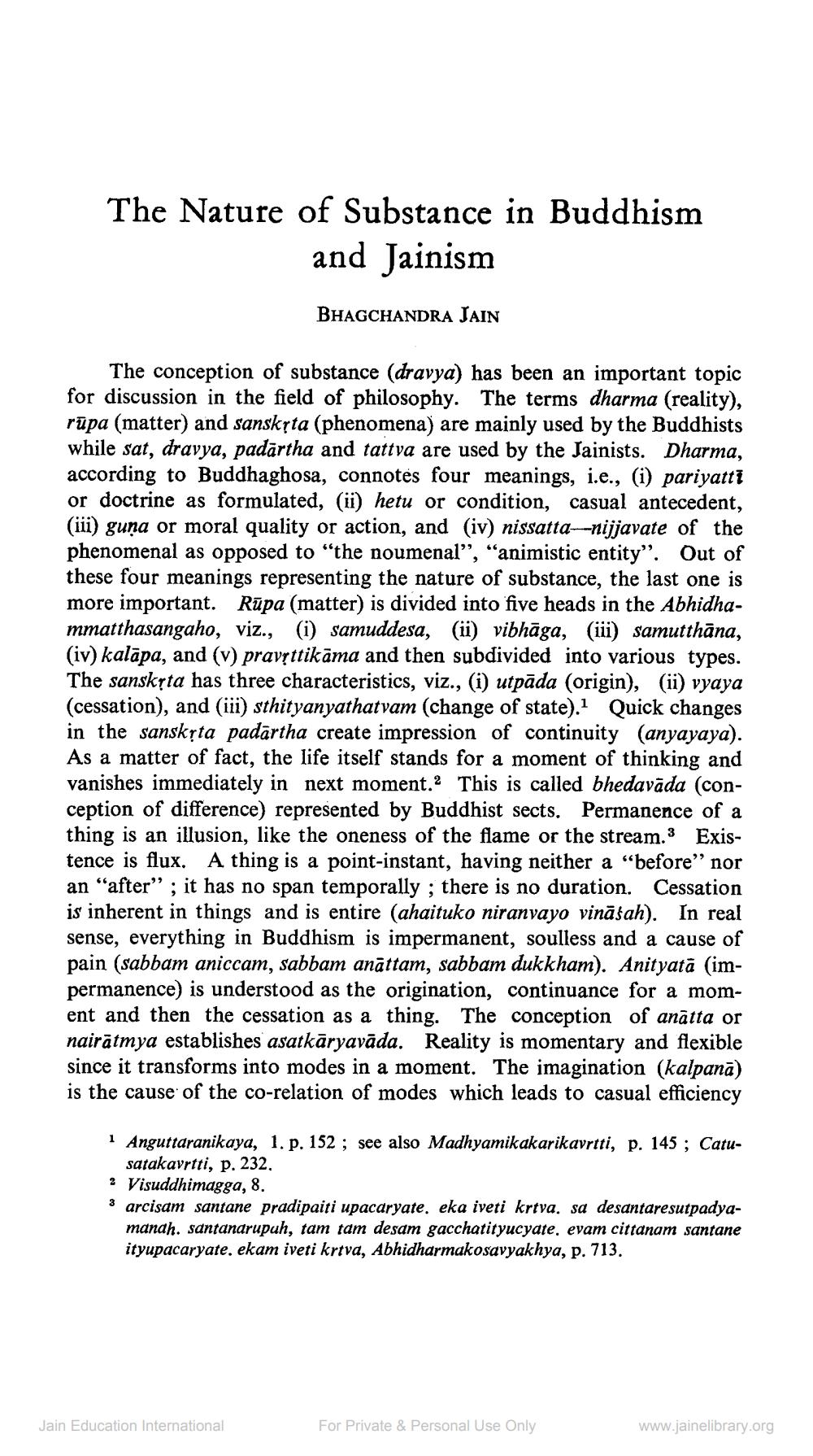Book Title: Jain Journal 1981 01 Author(s): Jain Bhawan Publication Publisher: Jain Bhawan Publication View full book textPage 8
________________ The Nature of Substance in Buddhism and Jainism BHAGCHANDRA JAIN The conception of substance (dravya) has been an important topic for discussion in the field of philosophy. The terms dharma (reality), rūpa (matter) and sanskṛta (phenomena) are mainly used by the Buddhists while sat, dravya, padartha and tattva are used by the Jainists. Dharma, according to Buddhaghosa, connotes four meanings, i.e., (i) pariyattī or doctrine as formulated, (ii) hetu or condition, casual antecedent, (iii) guna or moral quality or action, and (iv) nissatta-nijjavate of the phenomenal as opposed to "the noumenal", "animistic entity". Out of these four meanings representing the nature of substance, the last one is more important. Rūpa (matter) is divided into five heads in the Abhidhammatthasangaho, viz., (i) samuddesa, (ii) vibhāga, (iii) samutthāna, (iv) kalāpa, and (v) pravṛttikāma and then subdivided into various types. The sanskrta has three characteristics, viz., (i) utpāda (origin), (ii) vyaya (cessation), and (iii) sthityanyathatvam (change of state).1 Quick changes in the sanskṛta padartha create impression of continuity (anyayaya). As a matter of fact, the life itself stands for a moment of thinking and vanishes immediately in next moment. This is called bhedavāda (conception of difference) represented by Buddhist sects. Permanence of a thing is an illusion, like the oneness of the flame or the stream.3 Existence is flux. A thing is a point-instant, having neither a "before" nor an "after"; it has no span temporally; there is no duration. Cessation is inherent in things and is entire (ahaituko niranvayo vinasah). In real sense, everything in Buddhism is impermanent, soulless and a cause of pain (sabbam aniccam, sabbam anattam, sabbam dukkham). Anityatā (impermanence) is understood as the origination, continuance for a moment and then the cessation as a thing. The conception of anatta or nairātmya establishes asatkāryavāda. Reality is momentary and flexible since it transforms into modes in a moment. The imagination (kalpana) is the cause of the co-relation of modes which leads to casual efficiency 1 Anguttaranikaya, 1. p. 152; see also Madhyamikakarikavrtti, p. 145; Catusatakavrtti, p. 232. 2 Visuddhimagga, 8. 3 arcisam santane pradipaiti upacaryate. eka iveti krtva. sa desantaresutpadyamanah. santanarupuh, tam tam desam gacchatityucyate, evam cittanam santane ityupacaryate, ekam iveti krtva, Abhidharmakosavyakhya, p. 713. Jain Education International For Private & Personal Use Only www.jainelibrary.orgPage Navigation
1 ... 6 7 8 9 10 11 12 13 14 15 16 17 18 19 20 21 22 23 24 25 26 27 28 29 30 31 32 33 34 35 36 37 38 39 40 41 42 43
